As far back as the 15th century, there have been mentions of wrenches and applications that needed them such as pipe clamps and suits of armor.
Today, there are many types of wrenches or spanners, and although having all of them is not necessary, having a good number of them is very important so you can always have one that fits the project you have at hand.
If you don’t already know what it is I’m talking about, a wrench is also called a spanner in some places, and it’s a simple hand tool used for turning rotary fasteners like nuts and bolts or used to grip them to prevent them from turning.
Here in this article, I’ve listed the different types of wrenches so you can choose the right one for your projects whether you’re a professional craftsman or a simple hobbyists.
Table of Contents
Open-end wrench
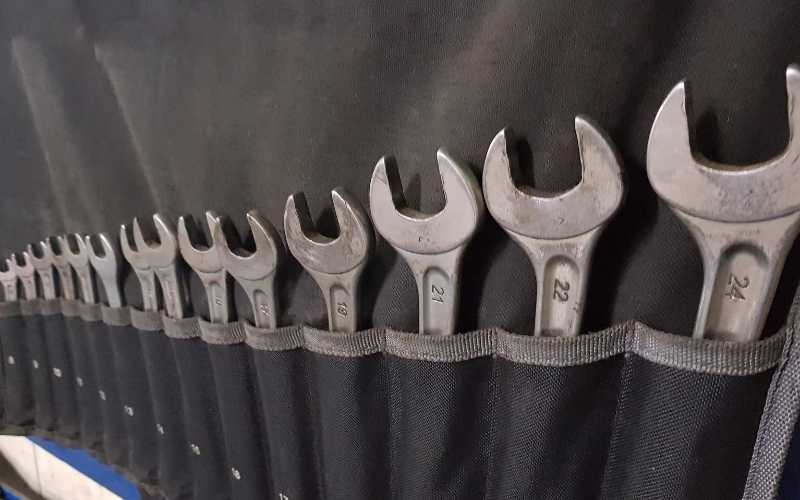
One of the most common type of wrench you’re going to come across or must have used is the open-end wrench.
You’ll surely find one of these in every mechanic or automobile workshop you visit.
It’s a one-piece wrench with a U-shaped opening made to fit the different sizes of nuts and bolts. It grips the two opposite faces of any nuts it used on.
Like most wrenches, it’s often double-ended, with both sides of the wrench having different size of openings, allowing you to use one wrench to fasten or losing two sizes of nuts or bolts.
The open ends of the wrench are usually oriented at an angle around 15 degrees to the handle of the wrench to allow for a greater range of movement especially in small spaces.
Box-end wrench
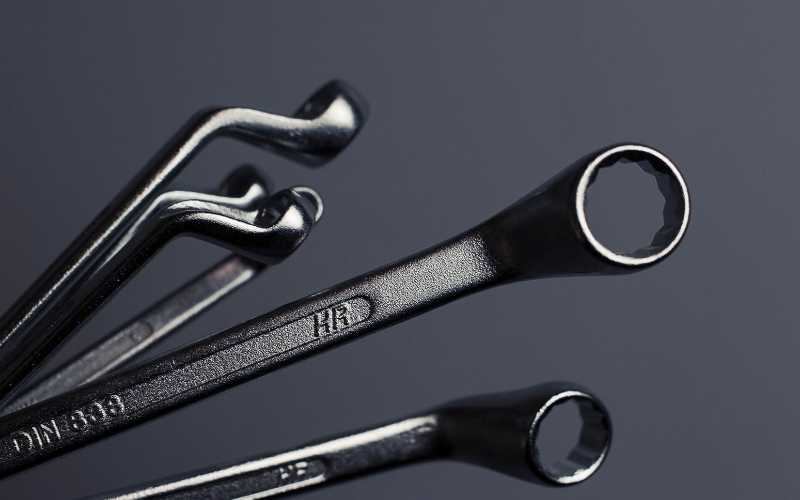
A box end wrench is also known as a ring spanner because the opening that grips the bolts and nuts looks just like a ring.
It’s a one-piece wrench with an enclosed six, eight or twelve-point opening that grips the nuts and bolts.
The six-point opening grips the nut/bolt at 6 points or angles, and the twelve-point opening grips the nut/bolt at 12 points or angles. The more the number of points, the more advantage you have of turning the nut or bolt where space for turning is very limited.
There are box-end wrenches with eight-point openings. These are ideal for turning and holding square-shaped nuts and bolts.
Combination Wrench
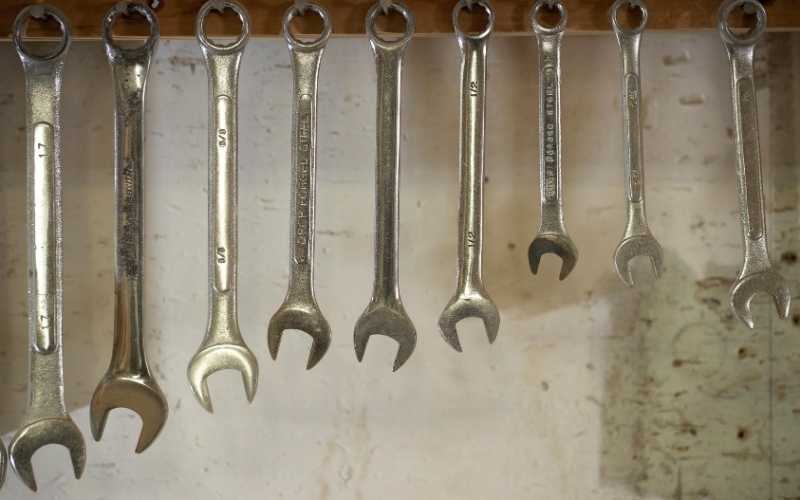
A combination wrench is a double-ended wrench that’s both an open-end wrench and a box-end wrench.
One side of the combination wrench is open-end, the other side is a box-end.
Flare-Nut Wrench

The flare-nut wrench is similar to the box-end wrench. It’s essentially a box-end wrench, but instead of a totally enclosed opening, it has narrow slit that allows it to be slid over tubes.
It’s made for gripping the nut on the end of tubes, and unlike normal box-end wrenches, it has thicker jaws to increase the contact area with the nut.
These are ideal for use on regular plumbing nuts typically made with softer metals and therefore more susceptible to wear when regular open-end wrenches are used to turn or tighten them.
Torque wrench
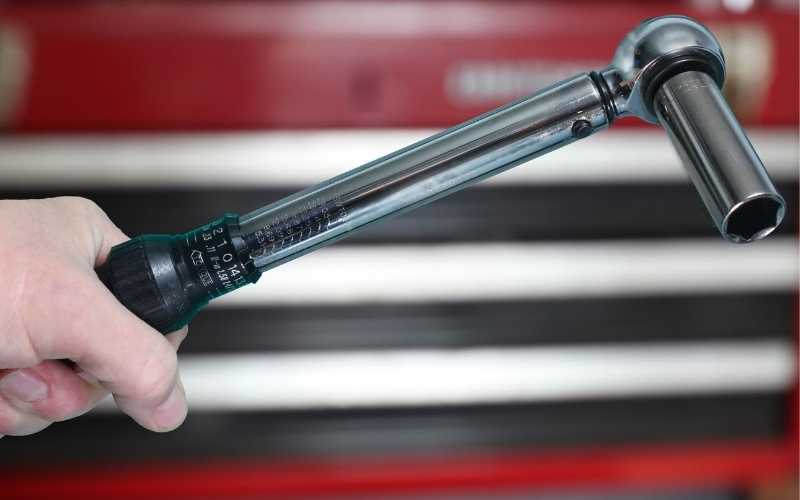
You make use of a torque wrench when you don’t want to over-tighten or under-tighten a nut or bolt. It’s used in combination with a socket wrench or a socket when the user needs to impact just a precise amount of torque to a fastener.
That’s why it’s called a torque wrench. You set the amount of torque you want to impact on the fastener on the torque wrench, and then you start tightening the fastener. The moment it gets to that particular torque, you here a click in the wrench that tells you it’s up to the torque you want.
Then you stop tightening and remove the torque wrench.
Allen wrench
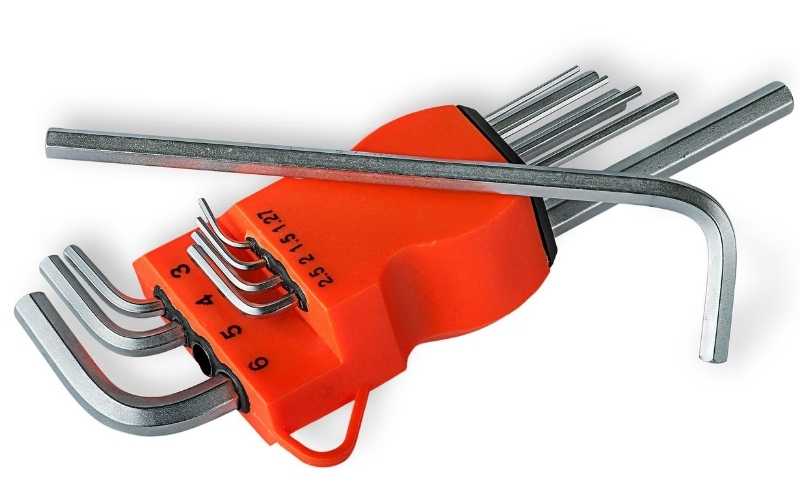
Certain screws and bolts are designed such that there’s a hexagonal socket or recess right at the head of the screw or bolt.
An Allen wrench is used for turning those types of screws and bolts. Allen wrenches are made from a hexagonal wire stock, and they come in two types or forms viz the L-shaped and T-handle Allen wrench.
As you can tell from the names, the L-shaped Allen wrench is shaped like an L from the Hexagonal wire stock while the T-handles Allen wrenches are shaped like T with the handles made not from the hexagonal stock but from straight metal or plastic.
Bristol wrench
The Bristol wrench is a not so common wrench that looks just like an Allen wrench and also designed for internal socket-head bolts and screws. Although, it’s mainly used on really small screws like those found on phones.
Unlike an Allen wrench though, the cross-section of the wrench head that fits into the screw/bolt head looks just like a square-toothed gear.
Torx wrench
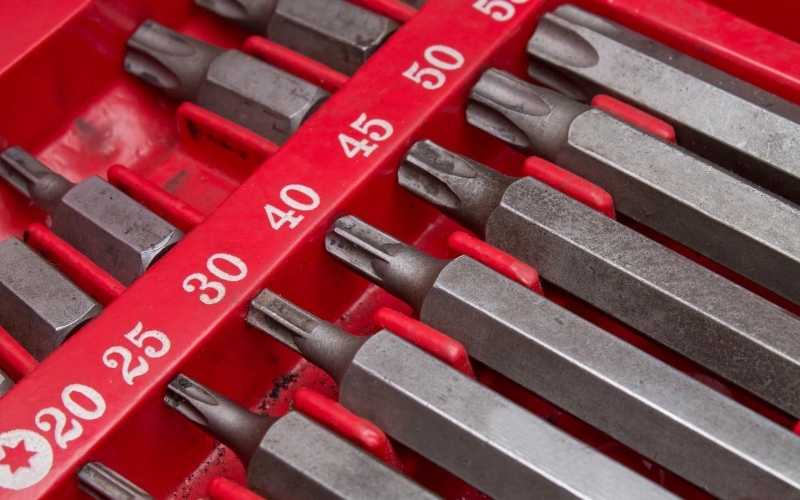
The torx wrench looks like L-shaped Allen wrenches but the cross-section of the head resembles a star. It’s commonly used automobile production lines, automated equipment repair and loosening of computer components.
It’s used in these applications because it’s highly resistant to wrench cam-out and thus does not wear easily and does not damage screws and bolts it’s applied on.
Ratchet wrench
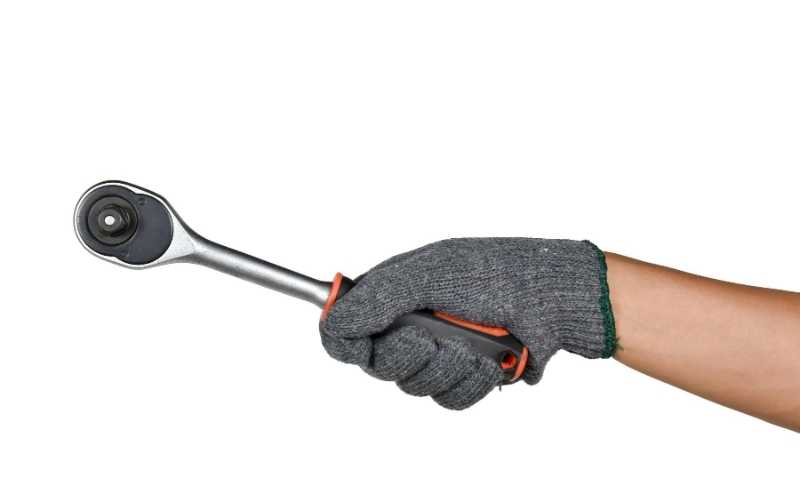
A ratchet wrench is a wrench that allows you to turn nuts and bolts without actually lifting the wrench from the nut/bolt in order to reposition it.
The end sections contain a ratcheting one-way mechanism or lever that allows the ends to ratchet or turn the fastener in one directing without turning it in the other direction when the wrench handle is returned.
By using a ratchet wrench you can tighten or loosen a nut/bolt without removing the wrench from the nut/bolt to change the position of the wrench.
Ratcheting box wrench
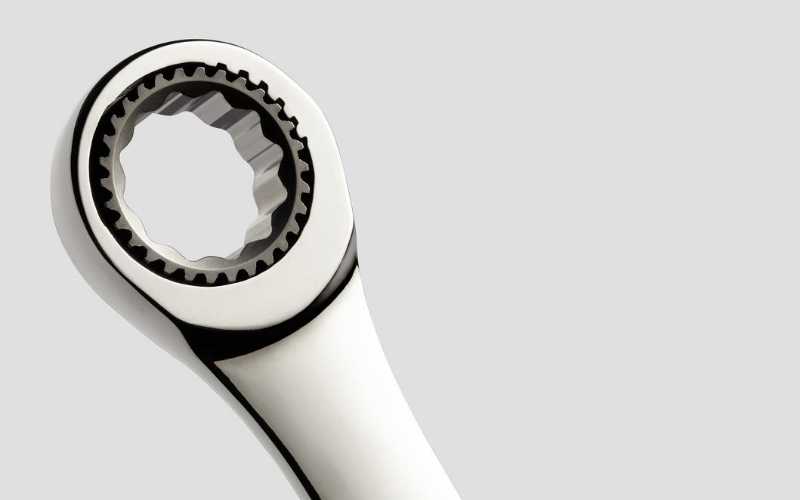
With a ratcheting box wrench, you have a ring spanner or box wrench with end sections that ratchets when removing a tightening a nut/bolt.
A ratcheting box wrench combines the compact design of a box wrench with the ease of use and quickness of a ratchet wrench, allowing you to use it in the most compact of spaces.
Flex-head socket/ratchet wrench
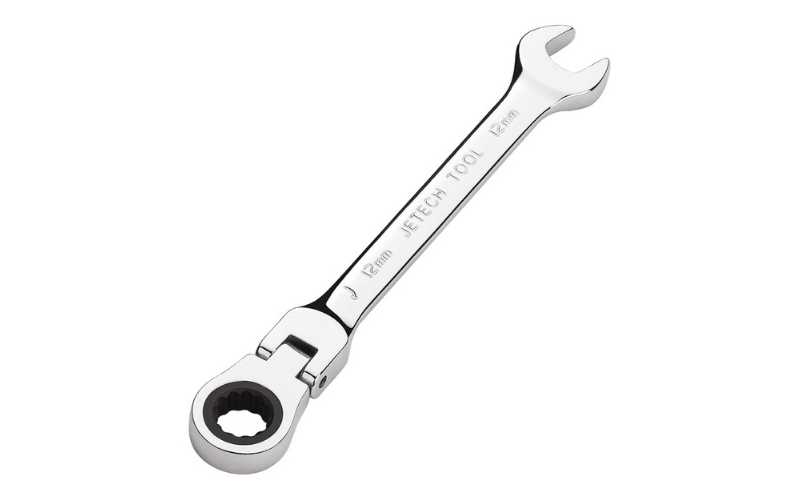
Also known as a Saltus wrench, a flex-head socket wrench is similar in concept to a socket or ratcheting box wrench but with the socket permanently affixed to the handle.
Unlike a socket wrench, the sockets of the Saltus are not interchangeable. Instead, the socket is designed so that it rotates around the handle to allow access to fasteners from different angles or positions.
Most flex-head or saltus wrench are often double-headed, with one end as an open-end head and the other, the socket.
Striking wrench

A striking wrench is also known as a hammer wrench or a slugging wrench. They’re thick, short and stocky wrenches with a block end to the handle, designed to be struck with a hammer to impact a greater tightening or turning force on the fastener.
Adjustable wrench

The adjustable wrench is a one-end wrench with jaws that can be adjusted to fit the fastener. The most common adjustable wrench have jaws displaced to a 15 degree angle relative to the handle just like a standard open-end wrench.
These are often ideal for plumbing fixes and auto repairs.
Bionic adjustable wrench
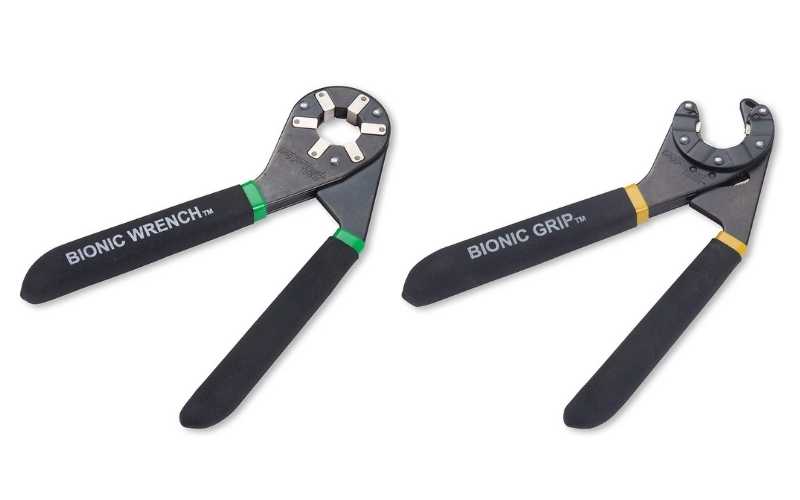
This bionic adjustable wrench by Loggerhead tools is one of my favorite adjustable wrenches. It has a rather perciuliar design which require you to squeeze it like pliers and the box-end jaw contracts to fit up to 16 sizes of nuts/bolts.
All you have to do is squeeze the handles and it will fit the fastener perfectly, and it won’t strip or wear your nuts and bolts.
Although the size makes it only ideal for removing or tightening fasteners that are out in the open, with enough room or space for you to grab, squeeze and turn the wrench.
Self-adjusting wrench
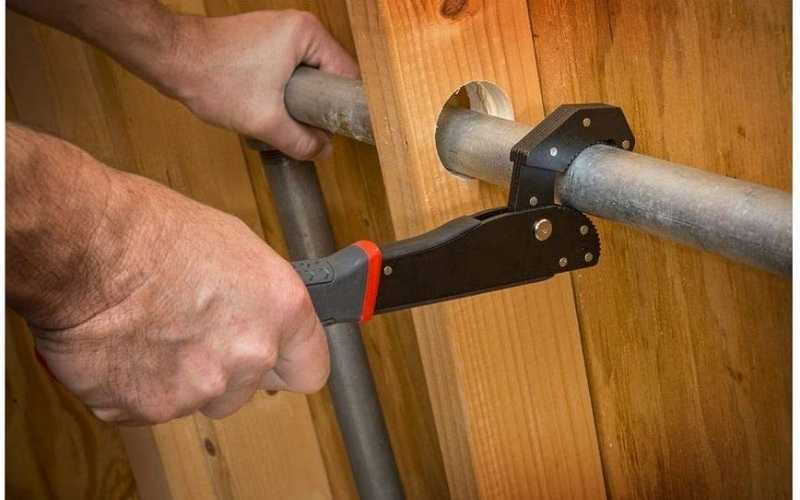
The self-adjusting wrenches are commonly used for holding pipes and turning fasteners. The head design of the wrench allows the user to easily slide the head into fasteners and pipes of different sizes, and it instantly grips the fasteners.
And the jaws of the wrench also automatically ratchet back between turns, allowing the user to continually tighten or loosen nuts and bolts without removing and replacing the wrench.
Monkey wrench
This is an old style adjustable wrench but with a straight handle and smooth jaws art right angles to the handle. It’s been replaced by modern and more effective adjustable wrenches.
Pipe wrench

The old pipe wrench is a tool every plumber is familiar with. It’s similar in design to the monkey wrench but features hardened serrated adjustable jaws with self-tightening properties that allow the user to securely grip, turn or hold soft iron pipes and pipe fittings with it.
Socket wrench

A socket wrench is designed like a hollow cylinder with a six, eight or twelve-point recess that fits over and grips one end of a nut or bolt head, allowing the user to loosen or tighten it securely.
It may or may not include a handle that allows the user to turn it. If it does not include a handle, then it’s simply called a socket, but if it does include a handle, then it is a socket wrench.
Crowfoot wrench
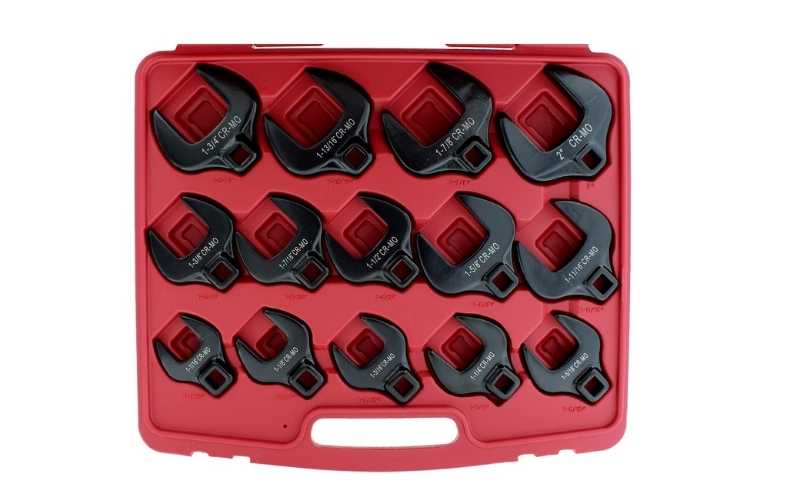
These look like socket wrenches and also use the same drive sizes but instead of being cylindrical like sockets, they look more like the open heads of open-end or box-end wrenches.
In terms of application, they’re used when the torque needed to turn or loosen a fastener must be measured or when using a regular socket wrench is not possible.
Crowfoot wrenches are also bought instead of regular open-end and box-end wrenches because they’re less expensive to purchase as open-end and box-end wrenches are larger and thus are more expensive.
Space and weight restrictions also makes their use necessary in other cases.
Speed wrench
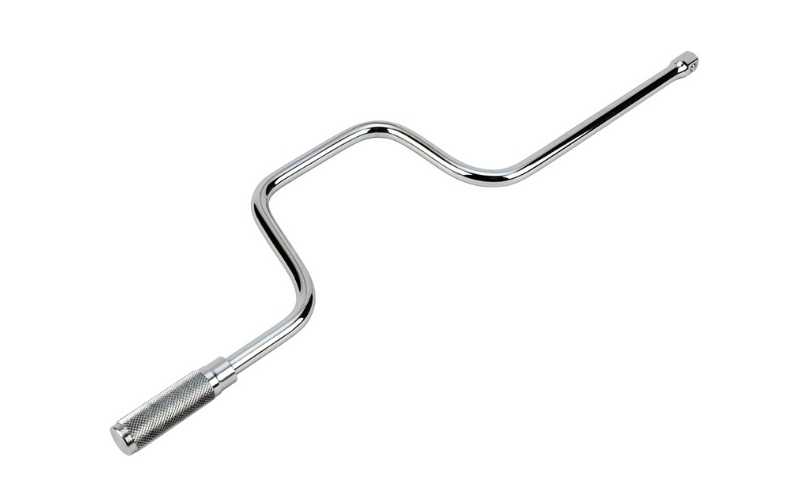
A speed wrench is typically a socket wrench with a crank-shaped handle that drives the socket. It’s mainly used when there’s enough turning to be done in order to save time. There also has to be enough room to access and turn the fastener.
Although it has less leverage than a conventional ratchet wrench, it’s very useful for the above cases, especially in automotive repair shops.
Cone wrench
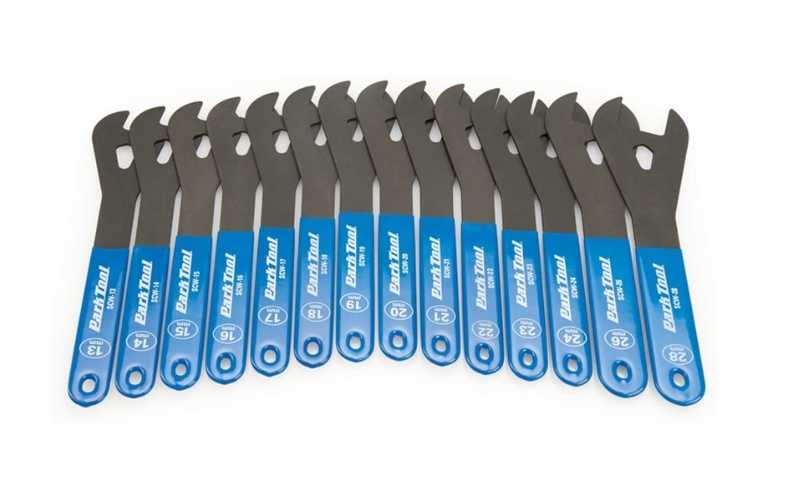
If you have a bicycle which you repair and maintain by yourself, then you’re probably going to this this wrench.
The cone wrench is used for loosening or holding the narrow wrench flats of adjustable bearing bicycle hubs or other adjustable hub bearings.
Drum key wrench
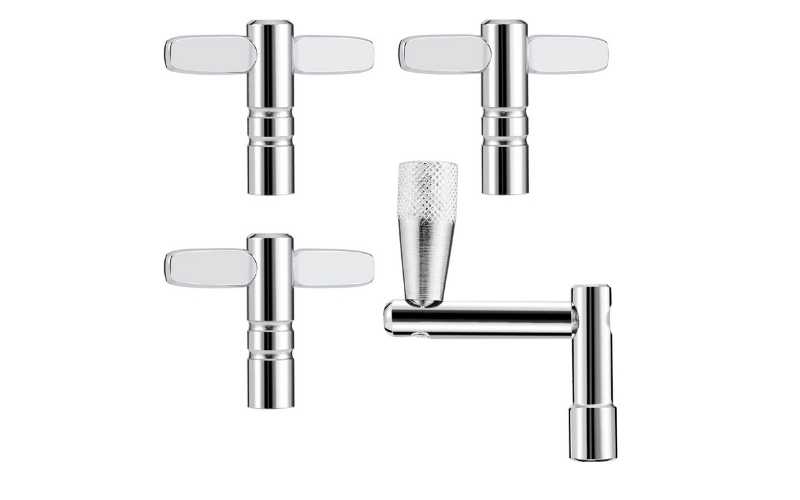
A drum key wrench is a small square-head specialty socket wrench percussion musical instrument like drums for turning lugs and other fasteners.
Impact wrench

This is one you’ll find in almost every mechanic or automobile workshop. Impact wrenches are mostly air-powered and they’re used by mechanics for loosening and tightening lug nuts and bolts on automobile tires, engines and other heavy machinery.

